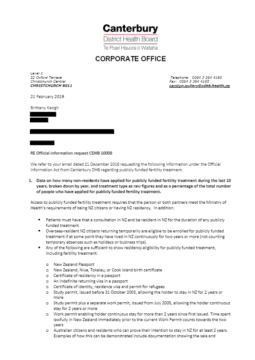Official information request details
- Data on how many non-residents have applied for publicly funded fertility treatment during the last 10 years, broken down by year, and treatment type as raw figures and as a percentage of the total number of people who have applied for publicly funded fertility treatment.
- Data on how many non-residents have received publicly funded fertility treatment during the last 10 years, broken down by year, and treatment type as raw figures and as a percentage of the total cost off received publicly funded fertility treatment.
- Data on the total cost of publicly funded fertility treatments non-residents have received during the last 10 years, broken down by year, and treatment type as raw figures and as a percentage of the total cost of publicly funded fertility treatment.
- The average wait time for publicly funded fertility treatment of non-residents and residents/citizens for the last five years, broken down by year.
- Data on how many residents have been declined for publicly funded fertility treatment during the last 10 years, broken down by year, age of patient, and reason they were declined.
- Data on how many people who have been diagnosed with unexplained infertility who have applied for publicly funded fertility treatment, during the last 10 years, broken down by year, age of patient and whether their application was accepted or denied.

